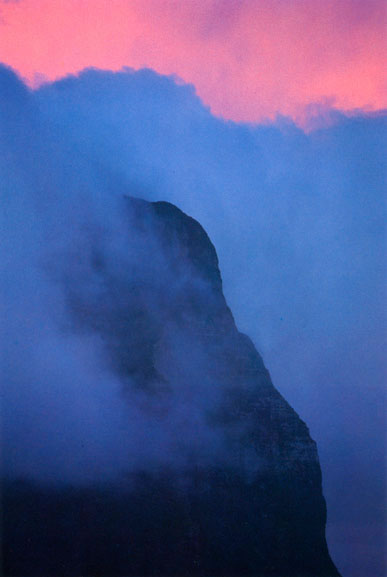Australia Portfolio

Clearing cloud on Mount Gower, Lord Howe Island – 1981
David Moore’s early 1940s images of the Sydney waterfront were moody, lyrical and romantic. By contrast, the city itself appeared as pure drama, its colonial architecture expressive of bold structural elements which dwarfed the crowds at street level. These were photographs whose impact would have been lost without the use of black and white film. The latter was Moore’s preferred medium for most of his working life, a passion sparked at 18 when his father came home with Edward Weston’s photographs of California and the American West.
A memorable early image was Redfern Interior, selected for the Family of Man exhibition. A photographic essay on the P&O liner Himalaya in Sydney Harbour, stowed in his baggage when Moore sailed on the Oronsay to London in 1951, gained him his first publicity abroad in The Sphere magazine. Back on home ground in 1958 he worked on assignment for Life Books, Time Magazine, Sports Illustrated, National Geographic and Picture Post, producing, among many, stories on rural life, the Pitjantjatjara community, the building of the Sydney Opera House, the Christo wrapping of Little Bay, portraits of artists, and news scoops like the definitive moment of Harold Holt seeming to pay obeisance to Lyndon Johnson.
At the same time Moore was building a body of private work which included a collaboration with architect Philip Cox on functional and/or vernacular architecture; a publication celebrating New England; a comprehensive look at Sydney Harbour, with text by Rodney Hall; a book covering the building over three years of the Glebe Island, now Anzac, Bridge; and a book of landscapes titled Australian Place, also with text by Rodney Hall. In these last three volumes there are a surprising number of images in colour.
Schooled and dedicated as he was in the tradition of the black and white master photographers, Moore was ambivalent about colour. Writing on the question of colour in the preface to volume 2 of David Moore: Australian Photographer, he says: ‘Too much colour can dull the senses and full colour imagery is often just too pretty for the desired emotional response’. Asked to recall just one colour photograph of truly lasting relevance, he says, ‘my mind falters’. Whatever his misgivings, there are many examples here, such as those of Ernabella, drought and the Pilbara, where rich and subtle earthy textures evoke to perfection the genius loci or spirit of place. An early reticence was in the process of being taken over by an intrigue with the language of colour.
For enquiries about these photographs please email Lisa Moore, or Josef Lebovic (Josef Lebovic Gallery).